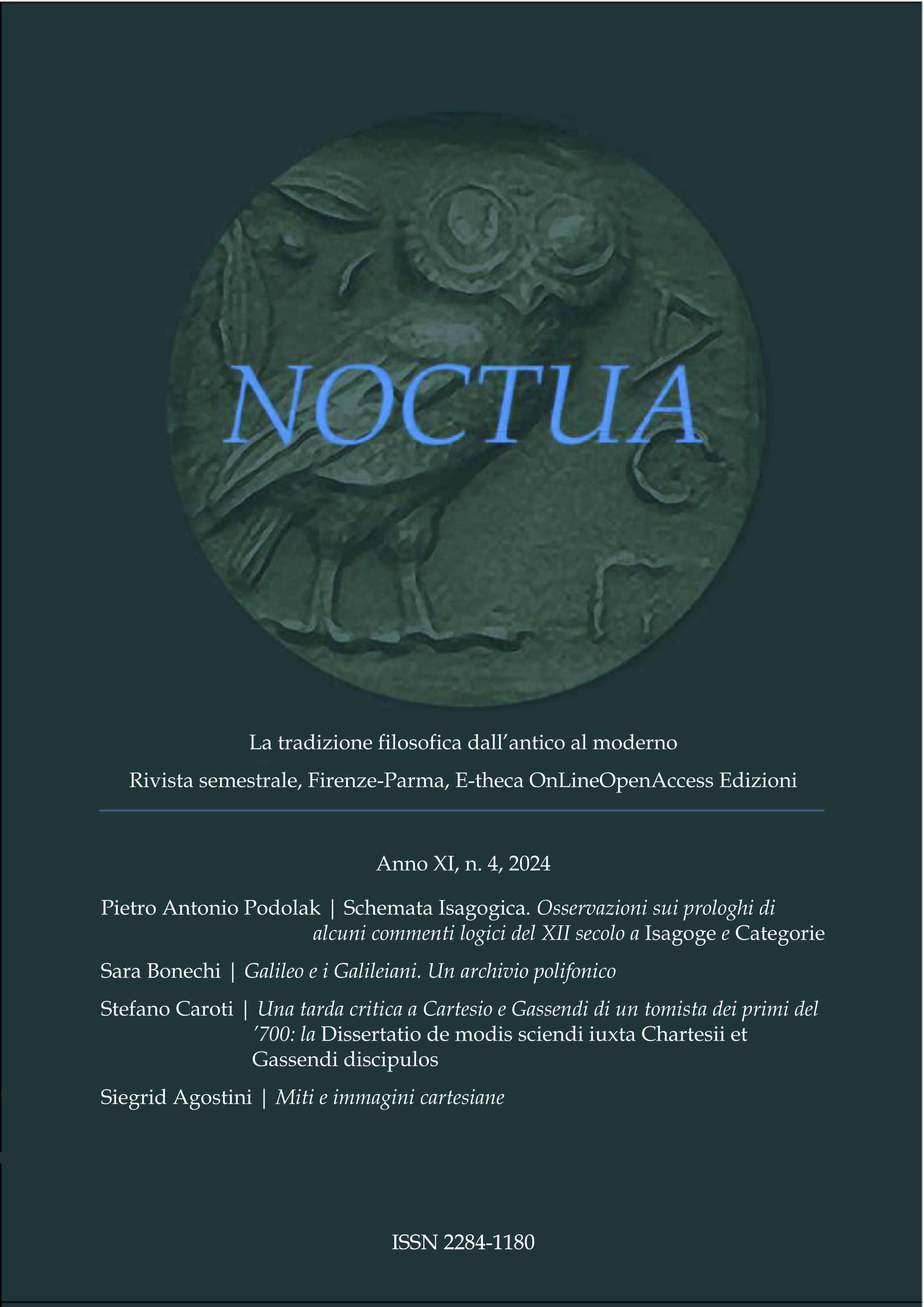Schemata Isagogica. Osservazioni sui prologhi di alcuni commenti logici del XII secolo a Isagoge e Categorie
DOI:
https://doi.org/10.14640/NoctuaXI13Keywords:
Boethius, Peter Abelard, Alberic of Mont Sainte-Geneviève, prolegomena, logical commentariesAbstract
The literary culture of late antiquity established a list of questions to be answered before studying an author or a text. Among other types of introductory sets, we find the six didascalica used by Boethius in his commentaries on Aristotle’s Organon. Twelfth-century commentaries inherited these requirenda, although each master felt free to modify and rearrange traditional elements. Within the logical commentaries, the Abelardian commentaries Logica ingredientibus and Logica nostrorum petitioni sociorum show some peculiarities, such as the modus tractandi; this feature is interestingly similar to the Notae Dunelmenses. With regard to Alberic and his school, we have, on the one hand, the information preserved in the H17 commentary and, on the other, the commentaries on the Categories of the Mont Sainte-Geneviève school. The authors of these commentaries were not mere executors of the master’s will, but their texts show an internal coherence in the presentation of the elements causa/utilitas/finis; moreover, they inherited Abelard’s modus tractandi. The most widespread element of all twelfth-century logical commentaries, however, is the entry materia; its origin is not rooted in Boethius’s commentaries, but it is typical of the literary tradition of the accessus.
Downloads
Published
Issue
Section
License
Copyright (c) 2024 Pietro Podolak

This work is licensed under a Creative Commons Attribution 4.0 International License.
Noctua pubblica contributi Diamond Open Access secondo i termini della licenza CC BY / Noctua publishes Diamond Open Access contributions under the terms of the CC BY license.






